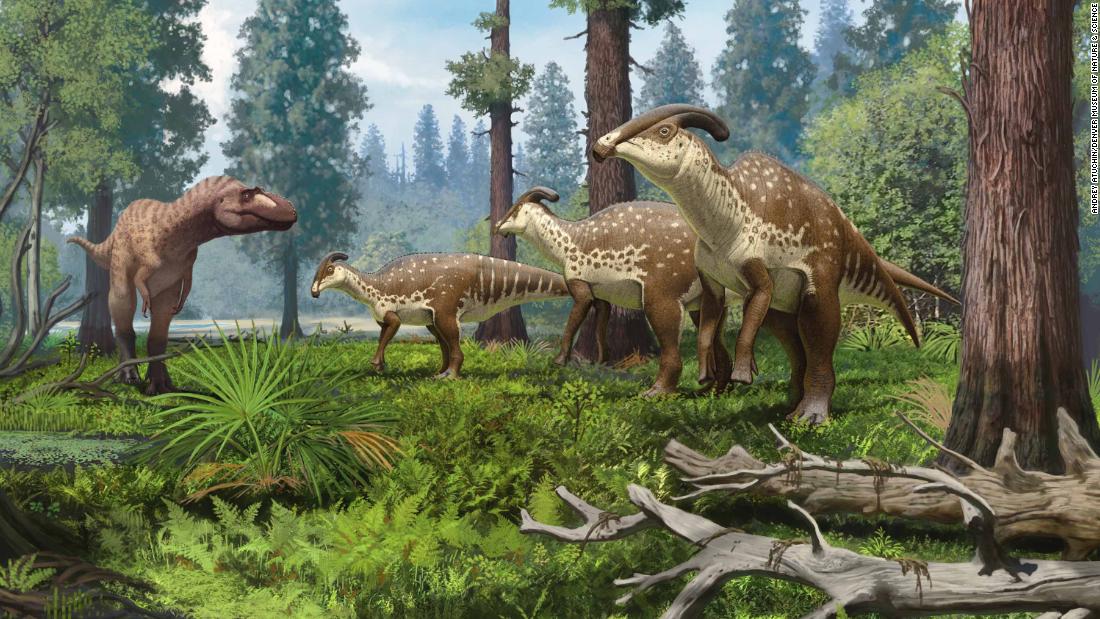
An exceptionally well-preserved fossilized skull found in New Mexico in 2017 – the first to be found in 97 years – has revealed new details about its strange Elvis-style pompadour. Their analysis has allowed paleontologists to definitively identify how this structure grew in this dinosaur.
“Imagine your nose growing on your face, three feet behind your head, and then turn to look over your eyes. Parasaurolophus was breathing through eight feet of pipe before oxygen reached your head.” , said Terry Gates, a paleontologist in the biological sciences department, in a press release.
The hollow tube of the head contained an internal network of airways and acted a bit like a trumpet.
“Over the past 100 years, ideas for the purpose of the exaggerated tube ridge have ranged from snorkels to super sniffers,” said David Evans, president of Temerty Vertebrate Paleontology at the Royal Ontario Museum of Canada.
“But after decades of study, we now think these ridges functioned primarily as sound resonators and visual displays that were used to communicate within their own species.”
The animal would have lived about 75 million years ago: a time when North America was divided by a shallow sea and many duckbill dinosaurs, horned dinosaurs and early tyrannosaurs would have traveled the earth.
“The preservation of this new skull is spectacular, finally revealing in detail the bones that make up the crest of this amazing dinosaur known to almost every child obsessed with dinosaurs,” said Joe Sertich, dinosaur curator at the Denver Museum of Nature & Science and the team leader who discovered the specimen.
Sertich and his team discovered the partial skull in 2017 while exploring the badlands of northwestern New Mexico. Only a small portion of the skull was visible on a steep sandstone slope, and volunteers were surprised to find the ridge intact. Bone fragments found at the site indicated that much of the skeleton may have once been preserved in an ancient sandbar, but only the partial skull, part of the lower jaw, and a handful of ribs survived erosion. .
The skull belonged to Parasaurolophus cyrtocristatus, formerly known from a single specimen collected in the same region of New Mexico in 1923 by the legendary fossil hunter Charles H. Sternberg. It has a shorter, curved crest than other species of this dinosaur, although it may be related to its age at death. There are currently three recognized species of Parasaurolophus, with fossils found in New Mexico and Alberta and dating back 77 to 73.5 million years.
“He has answered long-standing questions about how the ridge is built and about the validity of this particular species. For me, this fossil is very exciting,” said Evans, who has also worked on unraveling the mysteries of this dinosaur for almost two years. decades.
The research was published in the journal PeerJ on Monday.